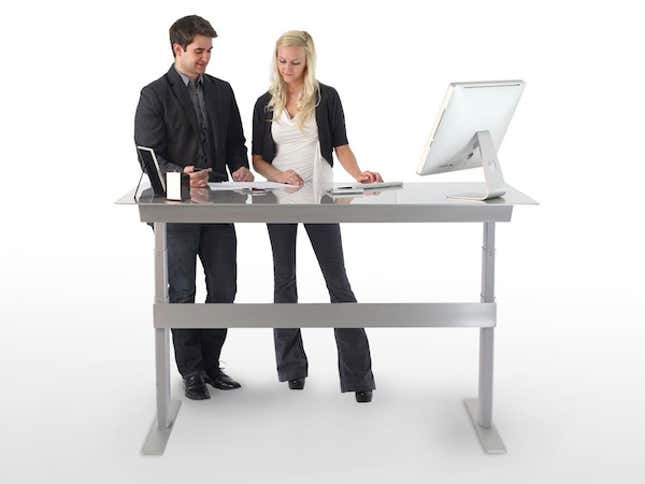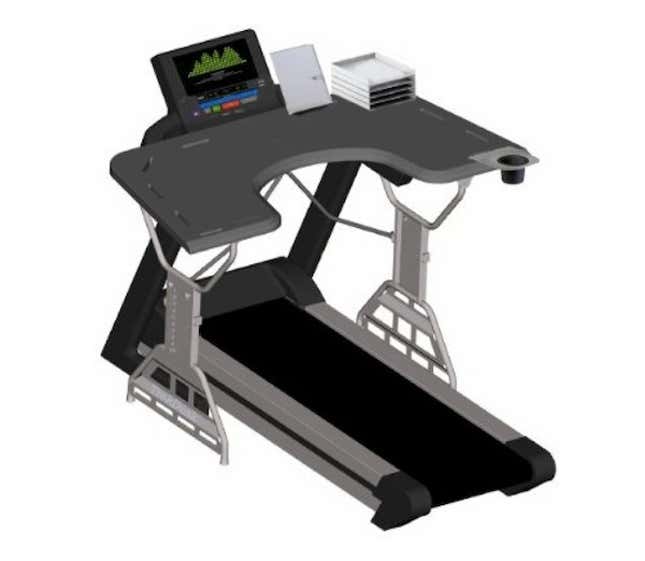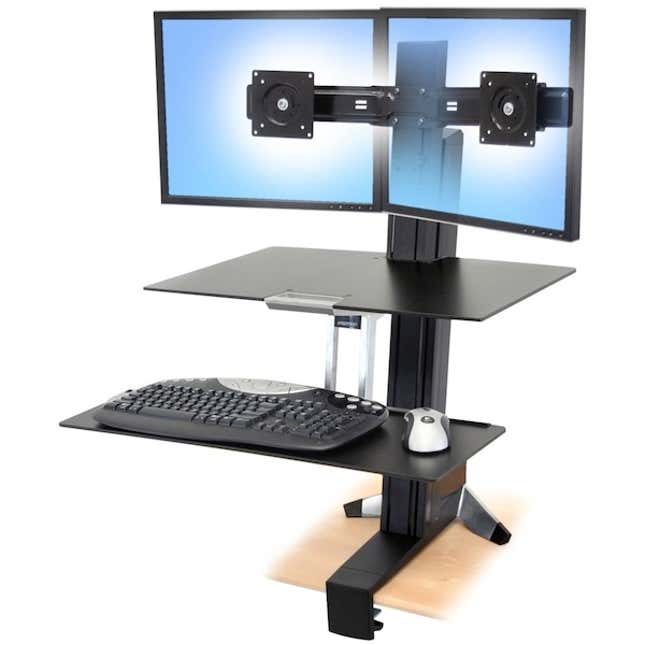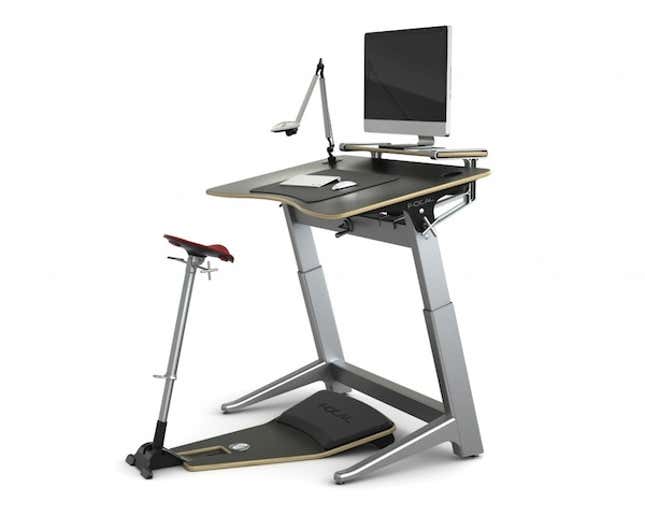Chairs, once a luxury, quickly became embedded in the workplace, thanks to Henry Ford. In the early 1900s, Ford thought that production workers could better perform repetitive tasks if they remained stationary.
“The industrial revolution meant that you could break up everyone’s work into small parts,” Berkeley professor Galen Cranz, author of The Chair: Rethinking Culture, Body, and Design told Quartz.“Everyone was sitting in a factory with the work going by, just performing the same repetitive motion over and over again. At first that felt good. You’re taking a load off of your feet.”
A century later, what once brought us comfort is slowly killing us. A study released last summer found that sitting for more than three hours a day can cut life expectancy by two years. A recent University of Leicester study concluded that sitting for long periods of time increases the risk of diabetes and heart disease. Meanwhile, the American Medical Association adopted a policy recognizing the potential health risks of sitting by “encouraging employers…to make available alternatives to sitting, such as standing workstations.”
According to Cranz, people haven’t been sitting in chairs for all that long. For thousands of years, humans worked on their feet, performing complex “whole body” tasks that required walking, running, reaching, stooping, and squatting. Fifty years ago, more than half of US jobs required physical activity but that has since shrunk to less than 20%. Now, there’s a movement to return to a work environment that is more natural and replicates the “whole body” activity of years past.
Furniture makers have responded with workspaces that are more ergonomically designed, where office equipment is made to maximize productivity and minimize discomfort. Here’s a guide to ergonomic standing work stations in the age of the information economy:
Standing desk
Taking after the drafters and architects of the world, the “standing desk” omits the chair, which has been found to be bad for posture and back and neck health. Standing desks like NextDesk’s Air, force employees to stand all day long, encouraging movement and minimizing the time workers spend seated. Standing desks can take days to adjust to and most people do get sore feet initially, which sometimes leads right back to using a chair.

Treadmill desk
Enter the treadmill desk: an active workstation that requires constant motion. But, don’t imagine that a set-up like TrekDesk’s treadmill desk could replace your workout regimen. Most people that use treadmill desks find that they do not work standing up all day. Instead, they tend to hop on, do some work, and hop off. In any case, regular exercise won’t cancel out the negative health effects of sitting for eight straight hours. But, changing positions through the workday will.

Sit-stand workstations
Then there are active, ”sit-stand,” and upright workspaces that put you in in-between positions—not quite sitting, but not standing either. That’s why sit-stand workstations like Ergotron’s WorkFit adjustable desk and Steelcase’s Gesture chair are designed so that employees can periodically switch between sitting and standing using the same chair, computer stand, and desk. However, a desk like the WorkFit can be difficult to set up and may crowd your workspace; the monitor and keyboard shelves take up extra space and contribute to computer wire clutter.

Upright workstations like Focal’s patented Locus seat/desk combo require that you sit in a leaning posture, rather than a traditional seated or standing position. This forces your legs to work almost as much as you do when you’re standing. The design opens the body up at the hips, approaching the ideal 135-degree angle that is best for backs. Cranz said that non-seated workstation configurations can “trick” the body into a more active and less sedentary metabolism.

If you are concerned about sitting all day, but the office won’t shell out for a more ergonomic alternative, there’s always ”guerilla ergonomics,” what Cranz refers to as incorporating more activity and movement throughout day.
Another option: set your chair at the maximum height, then sit on the edge of the seat, with legs outstretched, to get as close to the optimum 135-degree waist bend. Like the other options, you might draw some eyeballs but at least your back—and maybe your productivity—won’t hurt.




